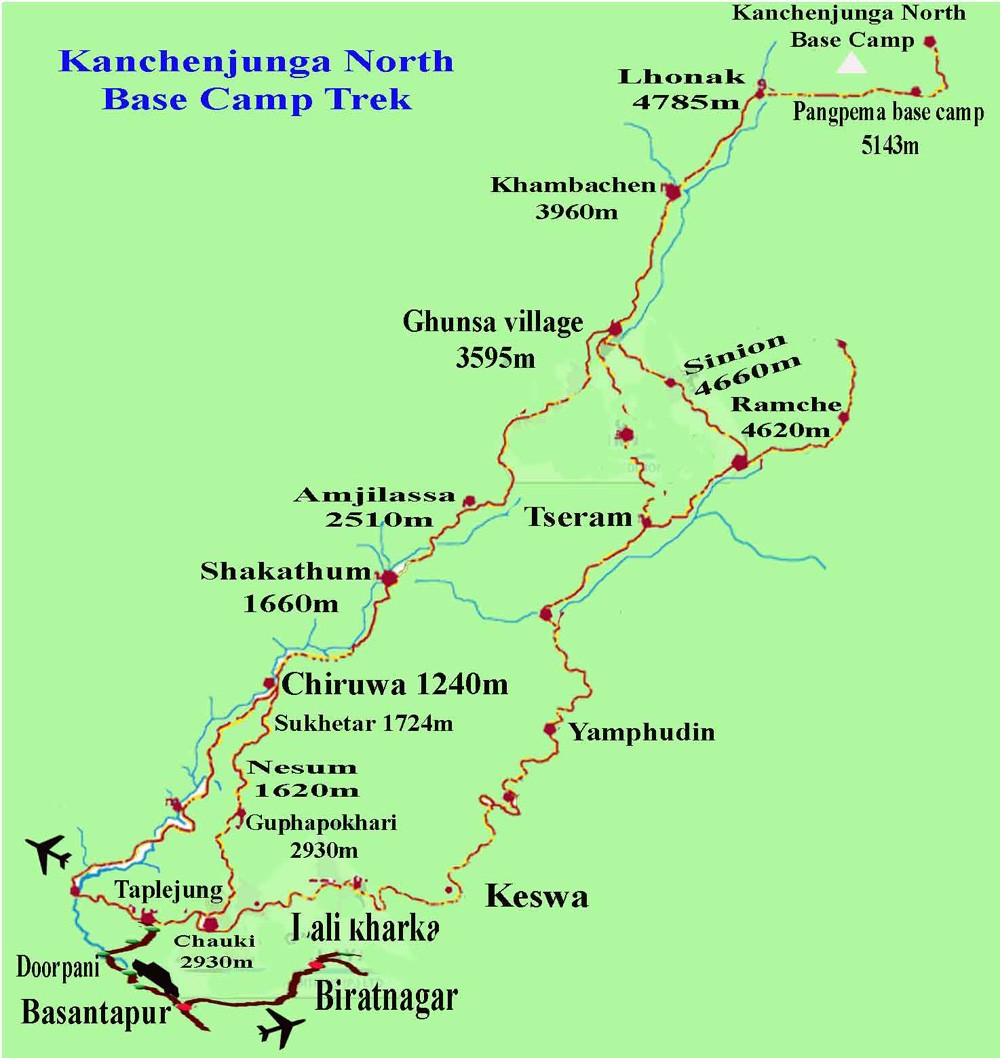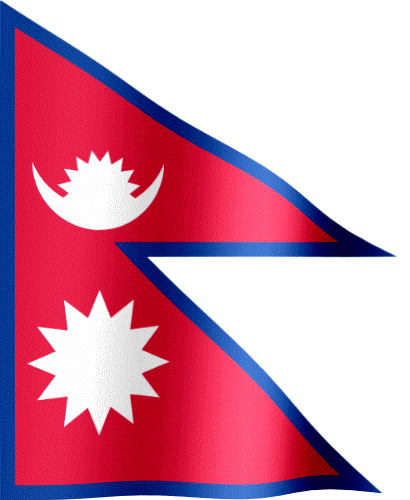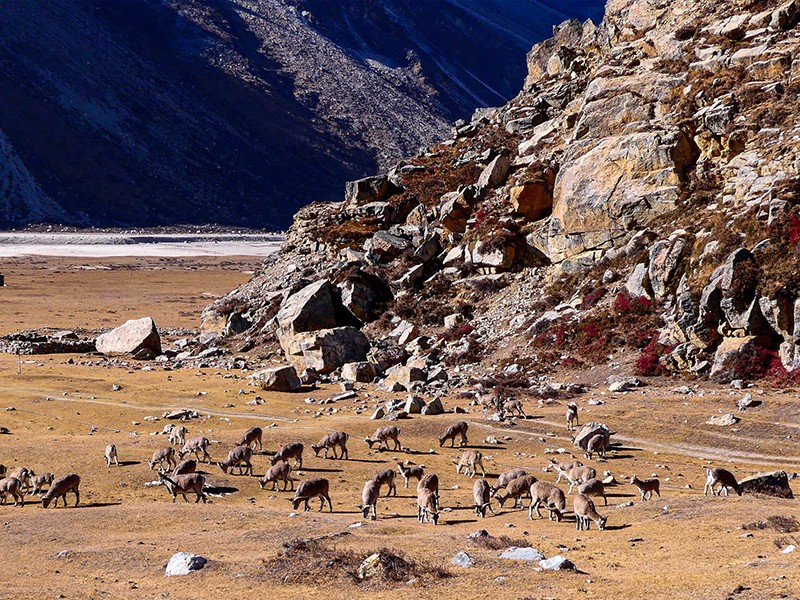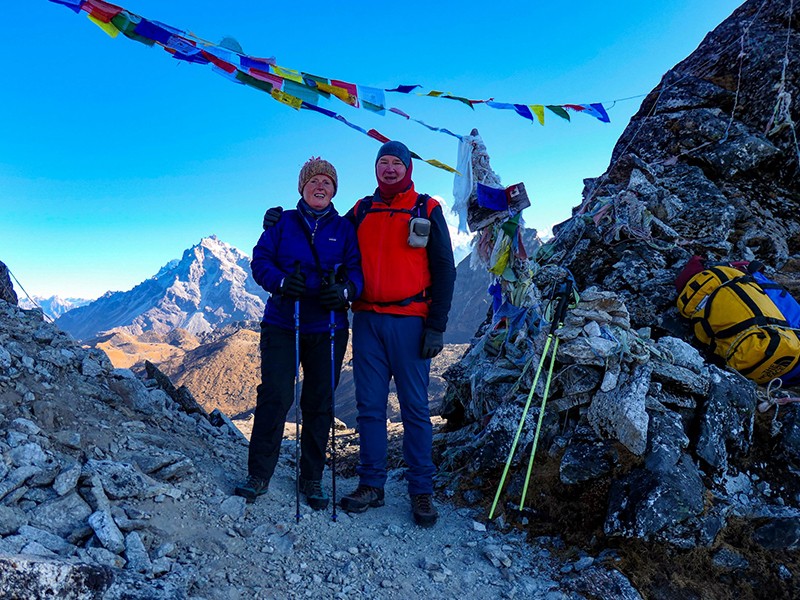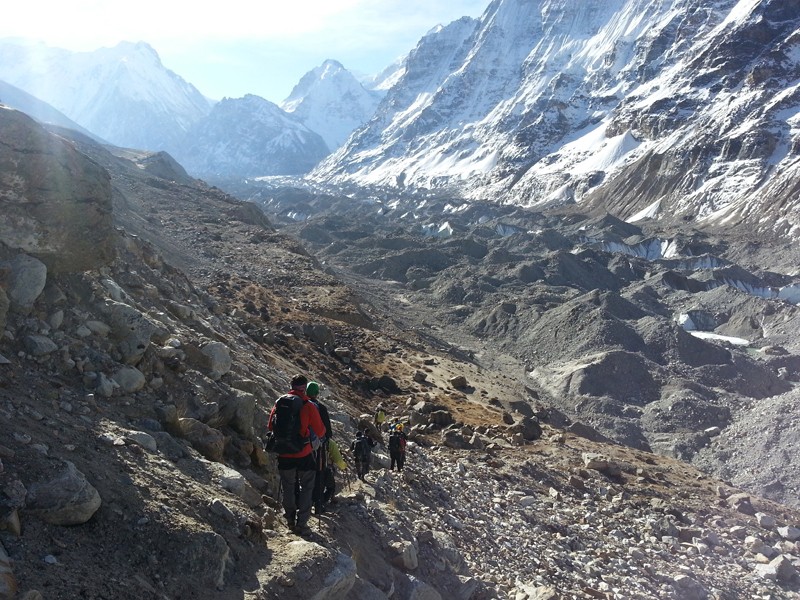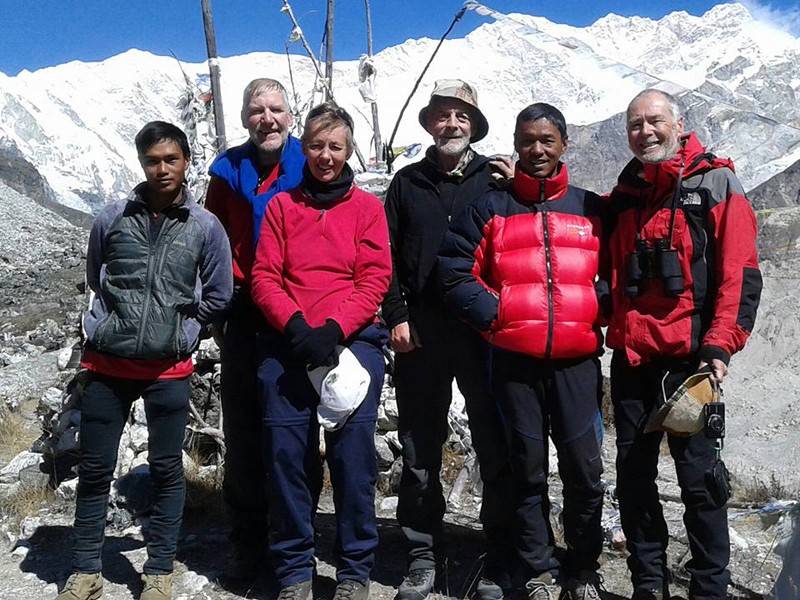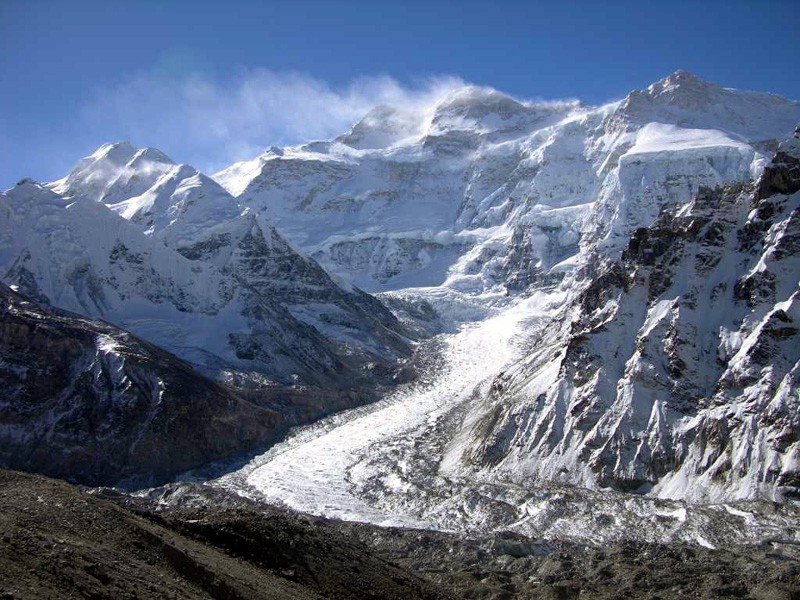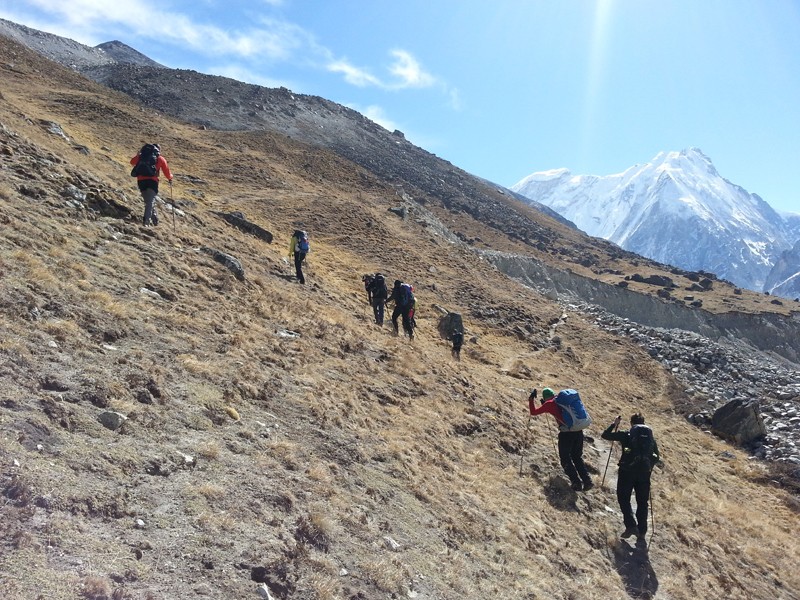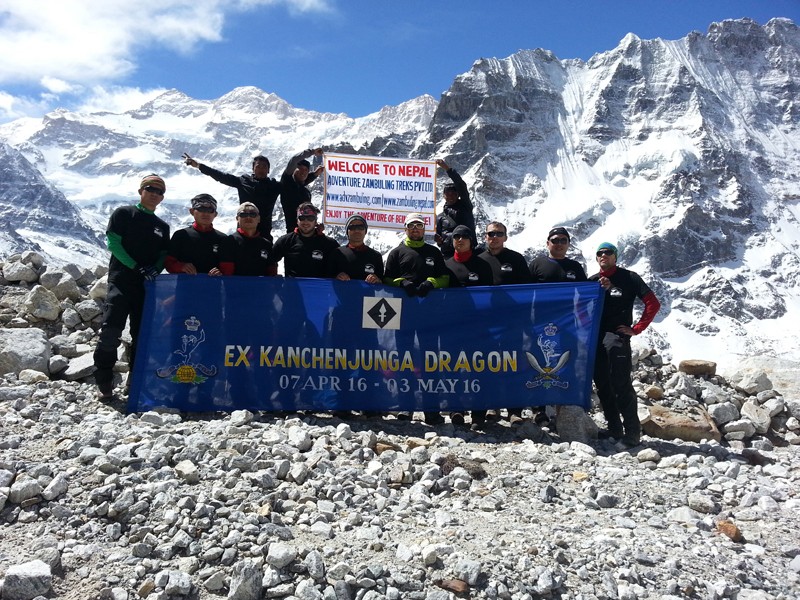Reference Code: KNSBCNP
Trip Start: Kathmandu
Trek Start: Taplejung
Trek Days: 26 days
Age: 20 years to 60 years
Season: Spring and Autumn
Accommodation: Lodge/homestay or Camp
Service: Full board
Destination: Nepal
Trip End: Kathmandu
Trek End: Taplejung
Trip Durations: 30 days
Physical Rating: Strenuous
Group Size: 4-16
Theme: Walking and Observation
Meals: Standard
Just below the looming Mt. Kanchanjunga (8586 m), lies the Kanchanjunga Conservation Area. Spread in an area of 2035 sq. km, the area is made up of alpine grass lands, rocky outcrops, dense temperate and sub-tropical forests, and low river valleys with the Kanchanjunga as its crown.
Situated in north eastern Nepal in Taplejung District, the conservation area is bordered by the Tibet Autonomous Region-China in the north, Sikkim-India in the east and Sankhuwasabha District in the west.
In 1998, the Department of National Parks and Wildlife Conservation and WWF Program together launched the Kanchanjunga Conservation Area Project to implement biodiversity conservation and sustainable development.
During the spring season, the area has an excellent display of flowering rhododendrons, orchids, lilies, primula and many other flowers.The lowlands are full of tropical hardwoods. These get replaced by oaks and pine as the elevation increases. Further higher is the vegetation including larch, fir and juniper up to the tree line.Kanchanjunga Conservation Area harbors rich diversity of wildlife including the endangered snow leopard, Himalayan black bear, musk deer, and red panda. Other animals in the area include the blue sheep, and many others. Impheyan pheasant, red-billed blue magpie, shy drongo are some of the many birds found in the area.
The conservation area has a lot of ethnic diversity and culture. As the original settlers of the Upper Tamur Valley, the Limbu are the dominant ethnic group in the lower regions. The Sherpa/Lama people are in the higher altitude where they arrived from Tibet more than four hundred years ago. There are lots of Monasteries, chhortens, temples, prayer-walls which become the icons of the conservation area's cultural heritage.
For an excellent view of the Mountain Kanchanjunga, you should reach the North base camp where a place called Bangpema is the excellent point for observation of the mountain. To make a circular trek you will have to pass through the Celele Pass at an altitude of about 4000 m to drop to Tseram from where you head toward the South base camp, another excellent observation point of Mt. Kanchanjunga. Kanchanjunga which lies in the far eastern boarder line of Nepal and Sikkim. It has been well known being visible from Indian summer resort of Darjeeling. It was opened for the trekkers recently and fewer trekkers are regulated each year.
Day 01 Arrival in Kathmandu and transfer to hotel
Namaste! And welcome to Kathmandu, the colourful capital of Nepal where ornately carved balconies mingle with beautiful shrines and temples. Your adventure begins with a welcome meeting on arrival at the exit gate of Kathmandu airport. Our staff will welcome you and pick you to your accommodated hotel. Please seek our company palmplate to find our staff at the main exit gate of the airport. Rest of the day you can relax at the hotel or short evening walk around local market on your own as per your wish.
Day 02 Rest and preparation day
A well deserved rest day at cosy of hotel after a long tiring flight. This day, one can move around nearby local market to purchase or hire trekking equipment that is necessary for the trekking like sleeping bags, walking sticks etc, exchange currency as requirement or simply walk around in the local market or Kathmandu Durbar squire nearby with small entrance fee as per your preference on your own. Evening at the hotel lobby there will be pre-trip briefing in which you will be introduced with your trekking guide and explained about your trip in short, instruction for safety etc.
Day 03 Fly to Bhadrapur, drive to Phidim
We take a morning flight to Bhadrapur. From there we drive for 2 hours to Birtamod, and for a further 4 hours to Phidim where we overnight.
Day 04 Drive to Taplejung (or Suketar) and trek to Lali Kharaka 2270m,
We set off early to make the journey by road from Phidim to Taplejung, or to Suketar. On arrival we meet with our porters and after loading up, we start trekking. We follow a ridge to start with, before descending through forests to the valley and our overnight stop at Lali Kharka 2270m.
Day 05 Trek to Khare Bhanjyang
The day starts with a descent through the village of Tambawa to Pakora, where we cross the Phawa Khola by the suspension bridge. We then climb steeply into the forests, which will give us welcome shade from the heat of the day. From the top of the pass at Khare Bhanjyang 2170m, we may get our first views of distant Kangchenjunga. We overnight at Khare Bhanjyang
Day 06 Trek to Mamamkhe 1830m
Today’s walk starts with a descent to warm up, passing several villages, including the delightfully named Funfun, where we may get our first views of impressive Jannu. The rest of the day is up and down to the next camp at Mamamkhe, a substantial village of about 60 houses 1830m.
Day 07 Trek to Yamphudin 1735m
A shorter day largely of contouring as we follow the valley above the river Kabeli Khola. Climbing through terraced fields we reach Yamphudin 1735m, the most remote permanent village on our route.
Day 08 Trek to Omje Khola 2445m
We start the day with a climb to the pass at Dupi Bhanjyang (2,684m). Trekking downhill through the woods we come to our overnight destination, the Omje Khola river 2445m.
Day 09 Trek to Thoronton 2995m
Leaving the farmlands behind, we now trek mostly through forest and pasture land. We gain further height to cross the pass of Lamite Bhanjyang 3430m, descending to the valley of the Simbua river that flows from the Yalung glacier. We overnight in the wooded valley at Thoronton (2995m).
Day 10 Acclimatization day for AMS
We have an acclimatisation day at Thoronton, and a local walk to gain height during the day is recommended, returning to spend a second night at the same altitude. This is a very important aspect of our trek and will undoubtedly assist with the success, as well as with our enjoyment of it.
Day 11 Trek to Tseram 3890m
Though we continue to gain height, today’s walk is gentle and follows the Simbuwa river. The rhododendron forests thin to give superb views of Kabru 7338m and Talung 7349m. Our overnight is at Tseram 3890m and at this altitude, we can expect a colder night.
Day 12 Trek to Ramze 4110m
Today we reach the tree line and the landscape opens out to the valley of the Yalung Glacier, littered with moraines and glacial debris. We follow the northern edge of the glacier with good views of Kabru South 7317m, Ratong 6678m and Kotkan 6147m. We overnight at Ramze. 4110m.
Day 13 Trek to Acclimatization and exploration day
We have an acclimatisation day at Ramze. For an acclimatisation walk we can move further up the Yalung Glacier we start to get views of Kangchenjunga’s south face. Reaching Oktang 4624m Jannu’s icy east face towers above. It may be possible to climb higher for better views if time and energy permit - your sirdar will advise on this.
Day 14 Trek to Yalung
For further morning is spent in the Ramze area for acclimatisation and exploration in the area. In the afternoon we trek back down to Yalung in preparation for crossing the Mirgin La.
Day 15 Trek to Mirgin La 4640m
We start the long climb up towards Sinelapche La, 4640m, the highest point on the route, followed by the crossing of the Mirgin La pass. The views of nearby Jannu are spectacular but distant Makalu, the Khumbu Himal and the mountains bordering Tibet are a panoramic backdrop. Our overnight will be at Mirgin La.
Day 16 Trek to Ghunsa
We descend through rhododendron forests to Ghunsa, a Sherpa village and our first contact with permanent habitation for almost a week. Ghunsa 3414m nestles on the valley floor. If it weren’t for the mani walls and prayer flags fluttering in the breeze, the setting could almost be alpine. Forests of giant deodar and other conifers, bearing masses of Spanish moss, grow up the hillsides.
Day 17 Trek to Kambachen
Climbing steadily today but the terrain starts to open out, with less forest and better views of the mountains. With the climbing over, we trek around the flank of the valley in full view of imposing Jannu, (7710m) known as the ‘peak of terror’. We overnight at Kambachen (4090m), the summer home of Ghunsa’s people.
Day 18 Trek to Lhonak
A day of spectacular scenery as we are back in among the high peaks. The walking is easier today but no doubt the altitude will slow us down. We pass the summer pastures of Ramtang just before reaching the moraines of Kangchenjunga’s glacier. We overnight at Lhonak (4700m) just beyond the glacier in view of Tent Peak (7365m), Nepal Peak (7168m), Wedge Peak (6750m) and Mera (6335m).
Day 19 Trek to Pang Pema
If we have fully acclimatised we will continue with the short walk into the base camp at Pang Pema, though the altitude and distracting scenery are likely to slow us down. Our overnight is at 5139m, lying at the entrance to a vast cirque formed of Wedge Peak, Ramtang (6700m), Kambachen (7902m), Yalung Kang (8505m) Kangchenjunga (8586m), The Twins (7350m) and Cross Peak (6510m). This is a dramatic setting for a well-earned supper.
Day 20 Contingency day/Exploration day
We have a free day to explore these wonderful surrounds. In case of any delays on our walk in, this day can be used as contingency day.
Day 21 Trek to Ramtang
We start our journey back down the valley. Though we are backtracking, a journey is never quite the same in reverse. There may be chances to photograph scenes missed on the journey in.
Day 22 Trek to Ghunsa
A leisurely walk down the valley to Ghunsa.
Day 23 Trek to Kyapra
A pleasant day walking through dense forest with occasional monkey troupes for company. Overnight at Kyapra 2770m.
Day 24 Trek to Amjilassa
A longer day, but as we get lower down and temperatures warm up and a welcome bathe in the river awaits.
Day 25 Trek to Chirwa
Continuing our descent down the valley but now through cultivated land. Today will be a longer day.
Day 26 Trek to Taplejung
Our final trek to Taplejung ends with a short climb back into the town, where we stay overnight.
Day 27 Drive to Phidim
After breakfast at Taplejung we will take a packed lunch for the 9 hour drive to Phidim where our staff will prepare dinner. Overnight at Phidim.
Day 28 Drive to Biratnagar, fly to Kathmandu
We have to start early for today’s 9 hour drive to Biratnagar. We take a late afternoon flight from Biratnagar to Kathmandu
Day 29 Final shopping day in Kathmandu
This is the final day in Nepal. A chance to do some shopping, explore at leisure or merely relax by the hotel. We enjoy a final night together, reliving the trek and our extraordinary achievements.
Day 30 Final departure
We say 'Namaste' for memories that will last a lifetime. There are no activities planned for today and you are able to depart the hotel at any time. Check out time from the hotel is at 12 noon. If you are departing later, you can arrange luggage storage at the hotel. For your final departure, our staff will pick you up from the hotel and transfer to Kathmandu airport approximately 3 hours prior to your international flight time.
Inclusion
Camping basis
All ground transportation as per itinerary
4 night hotel accommodation in Kathmandu with B/B plan.
Domestic Air fare (KTM-BDP-SKT-BDP-KTM) with airport tax(Optional)
Cargo charges
TIMs (Trekking Information Management system)
Kanchanjunga National Park Entry fee
Special Restricted Area Entry fee
Food for the members on camping basis
All camping equipment and camping charges
Medical supplies(First aid Kit will be available)
All required Nepalese staffs (salary, food, clothing, accommodation)
All Nepalese staffs insurance as per Nepalese Government rules.
Company service charge, VAT and government taxes etc.
Exclusion
International flight with airport tax.
Nepalese Entry Visa fee
Food during stay in Kathmandu
All personal equipment and personal expenses
Photography Charges, Monument charges and Monument entry fees
Personal Medical and travel insurance(must cover helicopter rescue evacuation cost)
Personal Medicine
Telephone and internet charges
Laundry charges
Alcoholic beverage, bottled drinks and cold drinks during the trip
Rescue evacuation charges if required
Staffs and porters Tips...
Equipment List
Clothing and Equipments List
» Pack to pack out - bring enough waterproof bags to carry all non-biodegradable rubbish back down the mountain.
» Remove all unnecessary packaging before leaving home.
» Bring enough warm dry clothes so that you can wrap up rather than burn firewood in the evenings.
» If you are going to trek higher than 5000m or you know it will be cold, buy an aluminum water bottle which can also be used as a hot water bottle at night.
» The easiest way to keep hydrated while trekking is to buy a 1 x liter platypus-drinking bladder to carry in your day pack.
» Make sure to buy proper trekking socks. Don’t buy synthetic socks as these promote sweating and can give you blisters. Always carry a few blister pads in your first aid kit and keep them handy in your day pack.
» Walking poles are very useful while trekking and helpful when descending.
» Please remember that waste disposal and recycling facilitates are limited in Nepal. When buying batteries make sure they are rechargeable and/or high quality so they last longer, and take them home to recycle.
More Lists
There is no definitive list. What you bring will vary according to the area, time of year and the length of your trek. Below is a suggested check list which you should adapt to your own needs. Ask yourself: Will there be snow/how long /high is the trek/are we camping?
» Good quality trekking boots with ankle support
» Lightweight shell/raincoat with hood
» Detachable fleece liner or separate fleece
» Fleece trousers
» Shorts and / or convertibles trousers- quick drying
» Sunglasses
» Sun hat and warm hat(good quality)
» Gloves
» Spare T-shirt x 3
» Sweat towel x 2
» Spare socks x 3 ( walking sock and thin inner sock)
» Small day sack
» Sun cream
» Small water bottle aluminum doubles as a hot water bottle.
» Iodine or water purifying kit,
» Soluble vitamin tablets to taste water or powder fruit drink
» Talcum powder
» Walking sticks or Trekking poles(good quality)
» Camp shoes/trainers/flip flops to wear in evening.
» Spare underwear 3
» Toilet kit
» Tissues
» Pen knife
» Bum bag
» Head torch(good quality)
» Biodegradable washing liquid / soap
» FILM
» CAMERA
» Ear plugs
» Sleeping bag liner(good quality)
» Sleeping bag(good quality-30)
» Bin bag/ gasbag to keep kit dry
» Small towel
» Lip balm
» Available in KTM
Personal First Aid (Aids Kit)
» Antiseptic
» Bandages
» Blister plasters
» Decongestant
» AMS medication like Diamox
» Eye drops – it can get very dusty on trails
» Paracetamol and/or ibuprofen
» Rehydration sachets, Imodium and antibiotics for traveler’s diarrhea
» Scissors
» Sterile dressing
» Sticking plasters and tape
» Throat lozenges / sweets
» Tweezers
» A sewing needle etc.
This trekking equipment list has been prepared by Adventure Zambuling Treks (P) Ltd.
